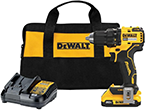If you're anticipating a major home renovation, then you'll need to know the difference between load- and non-load-bearing walls. Why? Because a load-bearing wall is one that holds or transfers the weight (the load) from one section of the structure to another. If you remove part or all of a non-load-bearing wall, then the remainder of the structure will stay intact. But if you remove all or part of a load-bearing wall, then part or all of the structure will most likely collapse.
Identifying load-bearing walls is more difficult in newer homes than in older structures. Older homes use all of the exterior walls as load-bearing walls, while some newer homes use only the front and back walls to bear the load. How can you identify the load-bearing walls in your home? Try these tips:
Another visual cue of load-bearing walls are those that end in large posts or columns. While the column might simply appear to be decorative, it probably helps support the weight of other walls and portions of the roof above.
If you have any doubt as to which walls are load-bearing walls, consult with a professional structural engineer before modifying your existing structure. Moving or modifying a load-bearing wall without proper bracing can cause not only structural damage, but the ensuing collapse could end your life.

Cordless, Compact, and Powerful! DeWalt's 20-volt drill-driver kit packs a big punch in a small package, with a powerful high-performance motor tucked away inside a compact design. A great addition to the tool chest of any professional or DIYer! Check out DeWalt 20-Volt Drill/Driver Kit today!
While plaster may be a very popular building material, it is also somewhat susceptible to cracks. If you don't take the ...
Discover MoreWater damaged walls can be an unsightly mess that can be pretty costly to repair. That is, unless you do the work ...
Discover MoreEven the most well-made and properly maintained masonry wall will eventually need a repair or two. If the problem isn't ...
Discover MoreThere are currently no comments for this tip. (Be the first to leave your comment—just use the simple form above!)
Copyright © 2025 Sharon Parq Associates, Inc.
Comments